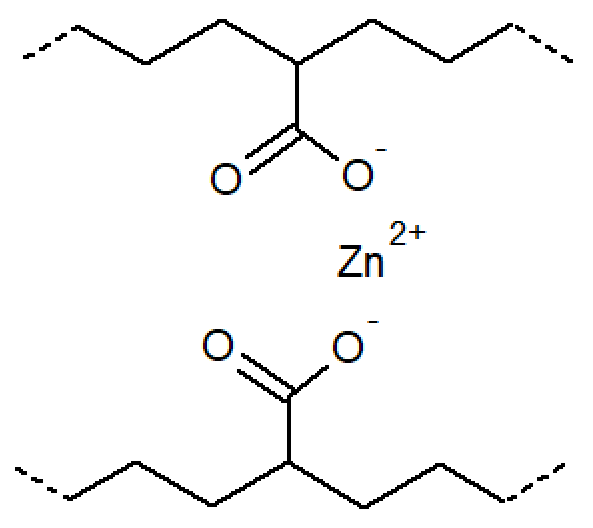Ionomer Films
(ethylene acrylic acid copolymer)
Properties
Ionomers are transparent thermoplastic elastomers of glass-like clarity, high toughness and outstanding flexibility. They consist of both electrically neutral and ionized repeat units that are randomly and or regularly distributed along the polymer backbone. One important characteristic of ionomers is the strong molecular aggregation of the ion-carrying groups to ion rich domains or ion clusters which act as physical crosslinks.1 When heated, the ionic bonds and clusters dissolve and when cooled, they reform. This gives ionomers a unique structure and behavior. At low temperatures, they behave like crosslinked polymers (elastomers) whereas at elevated temperatures they behave like ordinary thermoplastics.

The by far most important ionomer is ethylene acrylic acid copolymer (EAA) and its salt which is sold under the tradename Surlyn by DuPont.2 Films made of this resin are optically clear with a high degree of gloss and have excelllent vapor and moisture barrier properties. On the downside, Surlyn films have a low melting point, tear easily, and are difficult to process. They are also more expensive than most polyolefin resins and cannot be heat sterilized due to their low softening point. Despite these drawbacks, ionomers are widely used in the packaging industry. Films made of Surlyn provide superior hot tack, seal strength, and puncture resistance when compared to unmodified polyethylene films. They also have excellent tear propagation properties for directional tear and can be solvent "welded" using acetone. To reduce cost, they are often applied as a thin coating or laminate.
COMMERCIAL Ionomers
Commercial grades of ethylene (meth)acrylic acid (EAA, EMAA) are available from DuPont (Surlyn®, Nucrel®), SK Global Chemical2 (Primacor™), and Ineos.
Applications
Surlyn is frequently used as a tie-layer and as an adhesive resin which provides excellent adhesion to aluminum and other polar substrates as well as outstanding sealing properties. Important food packaging applications include thermoformed pouches, flexible lidding, vacuum skin packages and form-fill-seal pouches. Other important applications outside food packaging include surface films for golf balls, sports equipment, skin and stretch films, and overmolded (cosmetic) bottles.
The concentration of ionic groups in ionomers is typically no more than 10 to 15 percent.
SK Innovation, the energy solution unit of the South Korean conglomerate SK Group, took over Dow Chemical's EAA business at $ 370MM. Dow divested its copolymers unit to gain antitrust approval for its merger with the US chemical competitor DuPont. (PULSE, February 2, 2017)